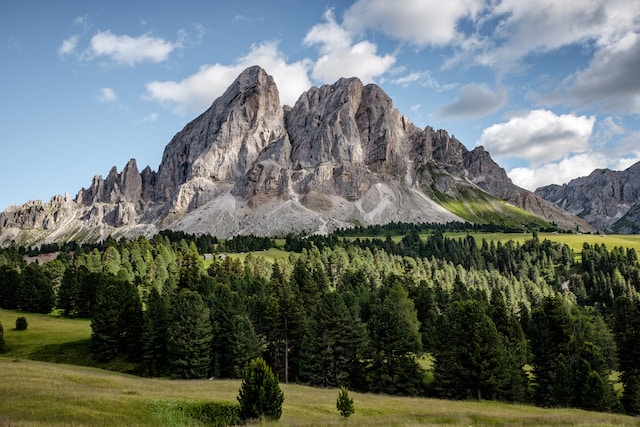The new Working Group on Droughts in Mountain Regions within the new scientific decade HELPING, by the International Association of Hydrological Sciences, is seeking survey contributions and links with the MRI research community. They aim to provide inclusive opportunities for communities living in mountains to co-analyse emerging drought hazards, co-determine sources of vulnerability and resilience, co-quantify emerging risks, and co-design solutions for droughts in mountain regions.
Describe the work and how your suggested working group will contribute to the goal(s): The droughts in mountain regions group aims to provide inclusive opportunities for communities living in mountains to co-analyse emerging drought hazards, co-determine sources of vulnerability and resilience, co-quantify emerging risks, and, finally, co-design solutions for droughts in mountain regions (Theme #2). Comparisons across world regions will allow them to also pursue Theme #1.
Mountains are the water towers of the world, with about 25% of the global population projected to heavily rely on their runoff by 2050. A warmer and drier climate can thus lead to an escalating chain of events in mountain regions that can threaten water security and ecosystem services worldwide: declining snowpacks, shrinking glaciers, a shift from snow to rain, changes in the seasonality and quantity of runoff, increased vegetation mortality, great wildfire activity, and depleted groundwater storage. Recent episodes in Western North America, the European Alps, and the Andes show that such chains of events are profound in intensity, significantly deviate from the historical range of variability, and have the potential to severely impact lowland regions.
Current drought science has generally focused on lowland regions, with only recent awareness of the importance of assessing how droughts in mountain regions can affect global water supply, and how these processes are intertwined with the cascading and buffering effects of cryosphere-ecology groundwater interactions in a warmer climate. In this regard, understanding and managing droughts in mountain regions is challenged by these regions being more remote, heterogeneous, and therefore often ungauged. Overcoming these limitations requires that all sectors of knowledge (scientific, institutional, economical, local, and informal) are holistically leveraged.
Some of the questions they aim to address here are: how are mountain water systems changing in a drying and warmer world? What are the key vulnerabilities and resilience sources of mountain communities, and how will they change over time? Where are the hotspots of risk of mountain droughts, both in downstream and montane regions, and what solutions can be envisaged to address these risks?
Describe the methods you will use to achieve the goal(s): The essential tool to answer their questions will be Mountain Living Labs (MLLs), meant to represent focus groups in different mountain regions aimed at facilitating the circulation and upscaling of knowledge from the local to the global scale. Horizontal MLLs will focus on studying drought hazard, vulnerability, or risk, whereas vertical MLLs will synergise the acquired knowledge on these three spheres in view of codesigning solutions -- the expected outcomes of this WG.
The proposer has already discussed this proposal with some colleagues working on droughts in Mountain Regions (e.g., Dr. Marit Van Tiel at ETH, Prof. Manuela Brunner at SLF, Dr. Raul Wood at SLF, and Dr. Tessa Maurer at Blue Forest Conservation). The WG remains open to other scientists and practitioners across all mountain regions of the world, and they will disseminate this WG across all networks to this end.
Describe the (a) short-term, (b) the long-term and (c) the ultimate results you hope to achieve: From a short-term perspective, the main result they expect to achieve is the creation of a global, cutting-edge network of scientists and practitioners focusing on the increasingly important topic of droughts in mountain regions. They plan to identify one reference person for each MLL (see previous question in this form), who will be the responsible person to lead the local MLL towards identifying questions and coordinating the local research. At the same time, the working group chair will coordinate reference persons at global scale to maintain this network throughout the decade and beyond.
From a long-term perspective, we aim at leveraging this network to identify a global catalogue of emerging hazards and vulnerabilities regarding droughts in mountain regions, as well as potential solutions. We expect this catalogue to be interdisciplinary, cross-cultural, and contributed to by not only scientists but also rural and mountain communities, economic stakeholders, indigenous/native communities, and policy makers. This catalogue will be published by the end of the decade in the form of one or more scientific papers, and one or more white papers for non-scientific audiences.
The ultimate goal is to leverage results of this working group to establish long-term synergies between members of each MLL and local communities, to unlock the potential for science to contribute to HELP in the context of droughts in mountain regions. While ambitious, proposers of this working group are collaborating with the chair of the very successful Drought in the Anthropocene working group of the previous IAHS decade to replicate that approach in the new decade. In this regard, it is expected that the proposed working group will also contribute to future steps of the Drought in the Anthropocene initiative.
Cover image by Luca Bravo.







